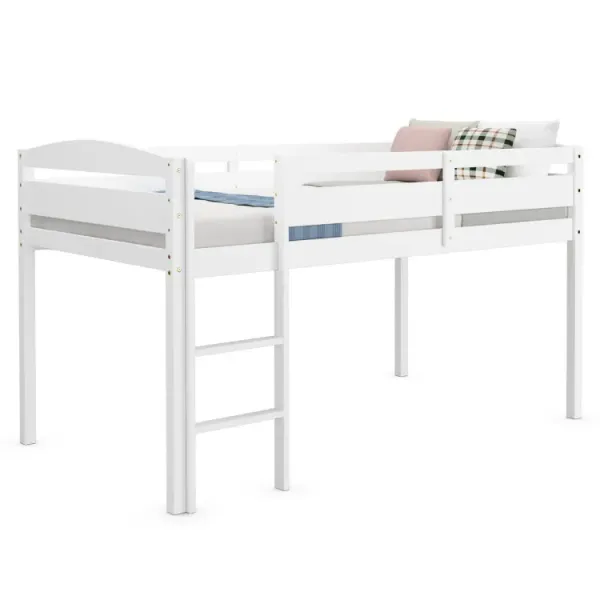You're on the list
By signing up, you agree to receive email marketing.
























Whether you’re looking for a fun way to bring on bedtime delight or clever ways to maximize space in a child’s bedroom, consider a bunk or loft bed solution. A stacked sleeping arrangement brings personality into a room’s design, as well as an efficient storage solution for toys, crafts, or clothing.
Before you embark on the journey to find the perfect bookcase or shelf, consider the following factors.
One of the main perks with bunk beds is the ability to customize the setup to meet your needs. Here are some popular options.
Ceiling height is crucial when deciding whether to install bunk beds in a room. A standard bunk bed’s minimum ceiling height for comfort and safety is eight feet.
At this height, you’ll find enough headroom above the top bunk to ensure both beds are safe and comfortable, allowing easy access to and from the bed. Of course, remember to measure the height of the mattress and bunk bed itself. For example, if you opt for beds with extra-tall legs, you might need nine-foot or higher ceilings.
Bunk beds are typically designed for children six years or older.
Bunk beds are popular in homes with multiple kids, as these beds can maximize space and provide additional storage options. It’s common for younger siblings to share a room before they hit their teens, so bunk beds can also make bedtime more fun and are terrific for sleepovers.
Sturdier bunk bed designs are also available for teenagers and adults, especially those sharing dorm rooms or smaller living arrangements.
Yes! Most bunk beds are designed specifically for efficiency to make the most of smaller spaces. Stacking two beds on top of each other frees up floor space to move around, play, or place other furniture.
Many modern bunk beds also come with additional features, such as drawers, built-in storage cubbies, and desks. Some even have unique designs that allow you to convert the bed into a sofa or study space. These add to their space-saving qualities, making bunk beds an essential furniture choice in shared, compact living spaces.
You're on the list
By signing up, you agree to receive email marketing.